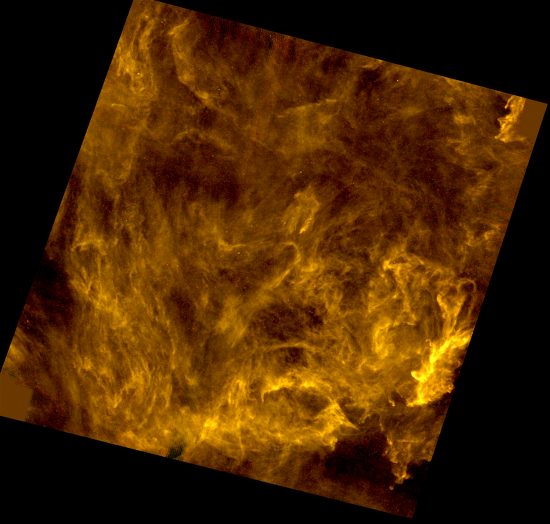
Filamentary network in the constellation Ursa Minor at infrared wavelengths of 250, 350 and 500 microns.. Credit: ESA and the SPIRE & PACS consortia, Ph. André (CEA Saclay) for the Gould’s Belt Survey Key Programme Consortium, and A. Abergel (IAS Orsay) for the Evolution of Interstellar Dust Key Programme Consortium. Click to enlarge.
Jan 13, 2017
Electric charge flow in space defines many phenomena.
Plasma is not a substance, it is a condition. Matter is categorized by four states: solid, liquid, gas, and plasma, therefore, those conditions cannot be analyzed in simple terms. Solids exhibit multiple aspects, including dimension, temperature, composition, etc. The same principle applies to the plasma state. As previously written, plasma is a manifestation of many phenomena that can vary. Since plasmas are ionized (electrons and protons are separated), the ion velocity in a plasma tends to be determined by electric fields. Also, the degree of ionization affects the general conditions of a plasma, making it more or less susceptible to electromagnetism.
In space, filaments of electric charge can be seen because of plasma excitation. Neon lamps, for example, glow because electricity flows through a neon plasma doped by mercury vapor. Various nebulae are explained by Electric Universe theory in the same way, plasma excitation due to electric fields, something that mainstream astrophysicists do not accept. In consensus circles, gravity and kinetic forces like shock waves are invoked to explain temperature variations or radiation.
On May 14, 2009 the European Space Agency (ESA), in conjunction with NASA, launched the Herschel Space Observatory into orbit around LaGrange point L2. Since Herschel used liquid helium-cooled infrared detectors built to last about three years, its mission came to an end on April 29, 2013.
According to a recent press release, astronomers working with data provided by Herschel found evidence for electric circuits in space, although that is not how they are identified. They are “gravitationally bound” strands of gas and dust, resulting from “interstellar sonic booms”.
Contrary to the idea of sonic booms, it is known that filaments of electric charge can flow through plasmas. Those circuits distinguish Electric Universe theory from most conventional viewpoints. Observational evidence, such as the Polaris filaments, can be coupled with laboratory experiments involving electromagnetic fields, whereas gravity-based theories are impossible to model in the laboratory.
Twisted plasma strands of similar width confirm the existence of circuits in space. Since electric discharges in plasmas create magnetic sheaths along their axes, those sheathes glow when enough power is applied. Double layers form when positive charges build up in one region and negative charges build up nearby. Electric fields then develop, which accelerate charged particles. Due to that charge acceleration, electromagnetic forces “pinch” the current channels into filaments that attract each other. Electromagnetic fields in plasmas can generate forces up to 39 orders of magnitude greater than gravity. However, when plasma strands approach each other, instead of merging, they twist into a helix that rotates faster as it compresses tighter. Such formations are known as Birkeland currents.
Celestial bodies are not isolated from one another, but are connected across vast distances. The Universe is interlaced with those circuits. Untold numbers of twisting Birkeland currents identify power-consuming loads therein. An explanation for why stars tend to coalesce in long arcs can be found in that understanding. So-called “star forming regions” in space should be evaluated according to electrodynamic principles and not on kinetic behavior, with mysterious magnetic fields added. Gravity is not the king of all theories; perhaps it should be relegated to knighthood in service to an electrical monarchy.
Stephen Smith
Hat tip to William Thompson












